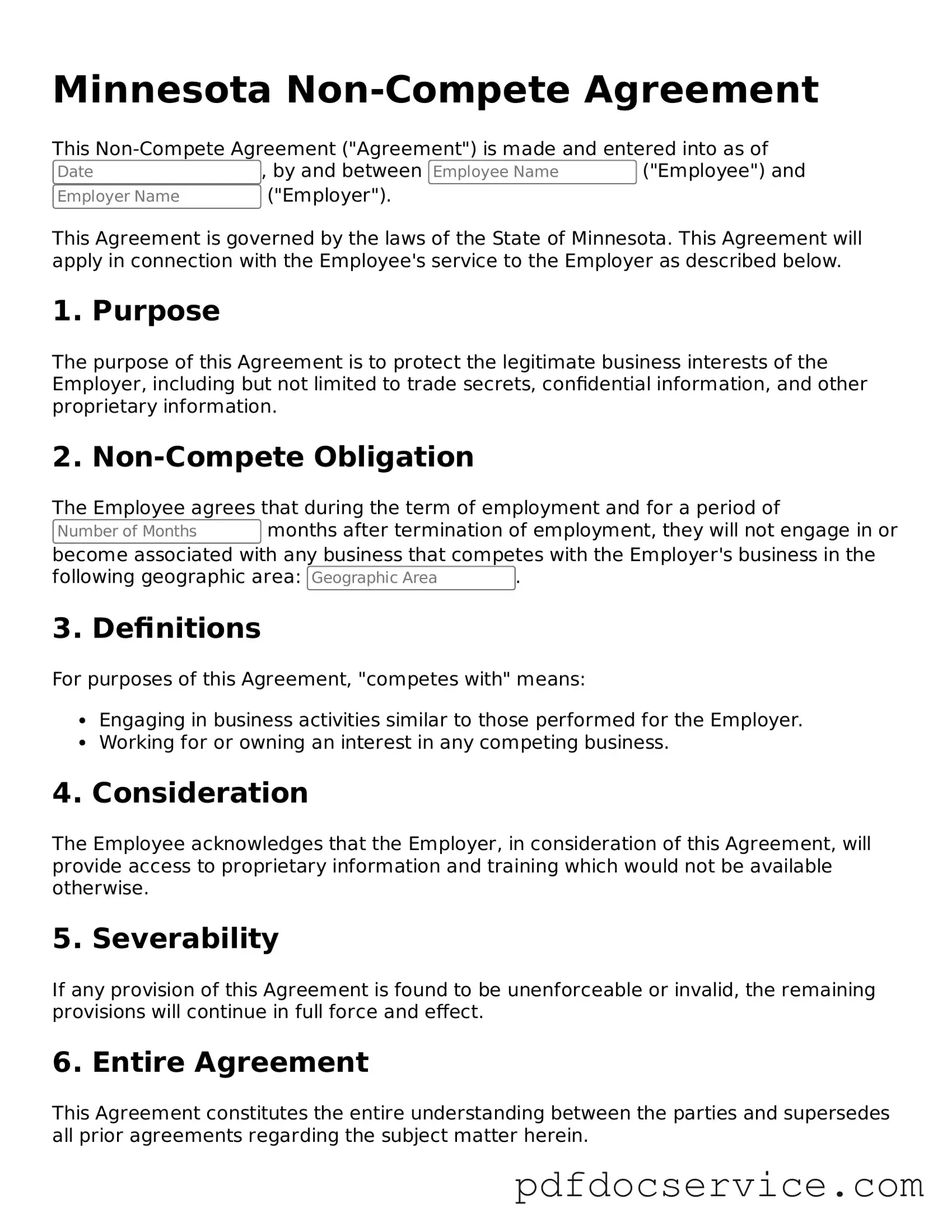What is a Non-compete Agreement in Minnesota?
A Non-compete Agreement is a legal contract between an employer and an employee. It restricts the employee from working for competitors or starting a competing business for a specified period after leaving the company. In Minnesota, these agreements must be reasonable in scope and duration to be enforceable.
Are Non-compete Agreements enforceable in Minnesota?
Yes, Non-compete Agreements can be enforceable in Minnesota, but they must meet certain criteria. The agreement should protect legitimate business interests, be reasonable in time and geographic scope, and not impose an undue hardship on the employee. Courts will evaluate these factors on a case-by-case basis.
How long can a Non-compete Agreement last?
In Minnesota, the duration of a Non-compete Agreement can vary, but it generally should not exceed one to two years. Courts often consider the nature of the industry and the employee’s role when determining if the length is reasonable.
What are legitimate business interests?
Legitimate business interests may include:
-
Protection of trade secrets
-
Preservation of customer relationships
-
Safeguarding proprietary information
Employers must clearly demonstrate how the Non-compete Agreement serves to protect these interests.
Can I negotiate the terms of a Non-compete Agreement?
Absolutely. Employees have the right to negotiate the terms of a Non-compete Agreement before signing. It’s advisable to discuss any concerns or desired changes with the employer. This can lead to a more balanced agreement that works for both parties.
What happens if I violate a Non-compete Agreement?
If you violate a Non-compete Agreement, your former employer may take legal action against you. This could result in an injunction preventing you from working for a competitor or even monetary damages. It’s crucial to understand the terms of the agreement before making any career moves.
Are there exceptions to Non-compete Agreements?
Yes, there are exceptions. In Minnesota, Non-compete Agreements may not be enforceable against certain professions, such as low-wage workers or employees who are laid off. Additionally, if the agreement is deemed overly broad or unreasonable, it may be invalidated by a court.
What should I do if I have questions about my Non-compete Agreement?
If you have questions or concerns about a Non-compete Agreement, it’s advisable to consult with a legal professional who specializes in employment law. They can provide guidance tailored to your specific situation and help you understand your rights and options.
